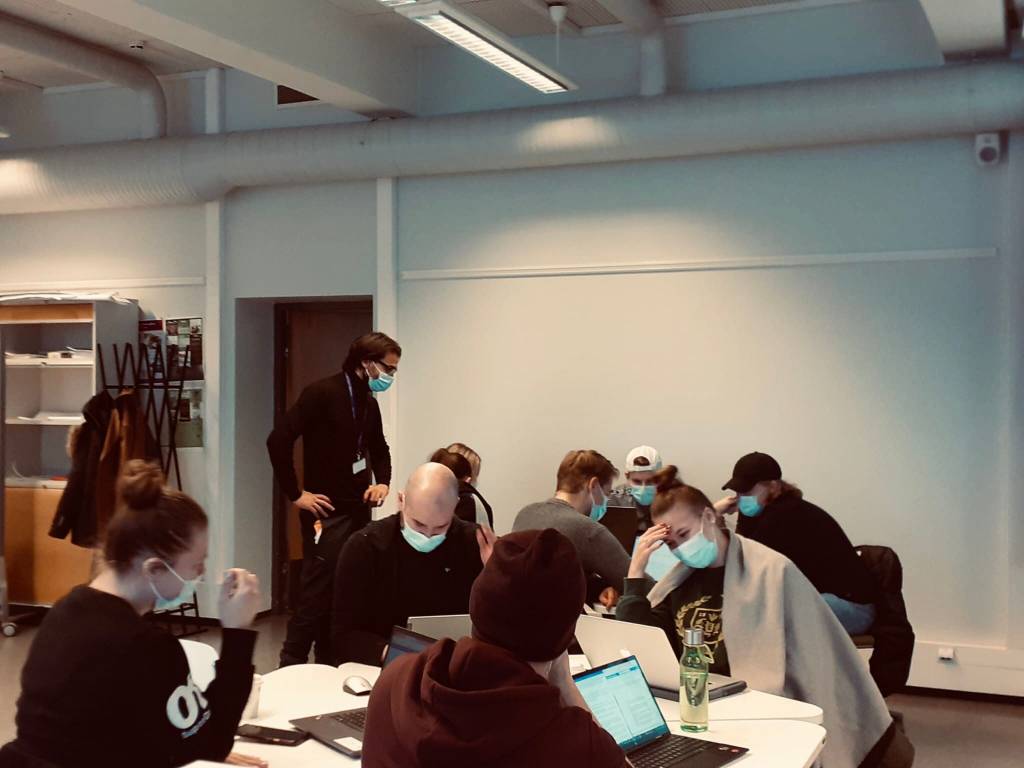Introduction
Organizations operating in international environment can face different kinds of potential risks. Risks are either direct or indirect consequences of the intrinsic nature of the business. Influences of the risks can vary in different periods of time and at different levels of the organization leading towards various consequences even within the same organisation. This study reveals one method used at the TAMK Business School and Media on how to manage these risks successfully.
Cross-cultural risks in international business
Potential risks as unexpected events or as a set of conditions that significantly reduce the ability of the management to implement the intended strategies, are monitored and analysed with the intention of anticipating the potential consequences of the realization of such risks. Due to the intrinsic nature of the international business environment the risks faced by the organizations can be classified in different ways using different categories. A good example of categorization is the classic distinction between financial, commercial, and country specific risks. Such risks can also be divided into many other different subcategories so that the numbers of these can increase up to twenty diverse types. Nowadays organizations operating in international environment understand the importance of another risk, i.e., the cross-cultural risk.
A cross-cultural risk refers to a situation or event where a cultural miscommunication puts some human value at stake. It is posed by differences in language, lifestyles, mindsets, customs, and/or religion. Values unique to a culture tend to be long-lasting and transmitted from one generation to the next. These values influence for example the mindset and work style of employees and the shopping patterns of buyers (Cavusgil, Knight & Riesenberger 2017, 41). Language is a critical dimension of culture as are the diverse interpretations of the messages that are sent to international audiences during the marketing communication process.
Even though many companies and organizations understand the potential risks set by the influence of the cross-cultural characteristics, the practical implementations of strategies for preventing the realization of that kind of risk is challenging because the possible consequences of the chosen strategy are infinite. Expressing competence in all possible intercultural contexts is demanding if not impossible even to the most skilled and experienced negotiators. A lot of practice and hard work is needed for developing good attitudes and skills. But the results of this learning process can clearly help the representatives of international organizations operating in different cultural contexts.
Due to the complexity of the subject, learning and teaching how to act in the international realm for managing cross-cultural risks can be challenging. Pedagogical methods supporting skill development to apply theoretical knowledge with practical implementation are successful in this context since the final pedagogical goal is the development of a high degree of cultural sensitivity. According to Mahon (2006, 391–405) the core of this sensitivity is an ability to understand subtle differences between cultures. A high degree of cultural sensitivity is an indication of increased cognitive sophistication, a deeper ability to discriminate (i.e., understanding the cultural difference) and a better propension to act in the appropriate manner in different cultural environments.
Development of intercultural sensitivity in a classroom setting
In creating a valid study content about cross-cultural understanding and intercultural communication and cross-cultural risk anticipation, teachers must be aware that a high degree of cultural sensitivity is the result of a learning process having different stages requiring personal exposure to variety of cross-cultural challenges. In students’ learning processes supported by teachers/coaches, the students will gradually be able to discuss the complexity of the cultural influences and differences, and to compare and analyse the commonalities and differences of various interpretations and perceptions surrounding culture. They also learn to identify cultural differences that might have contributed to problems, misunderstandings, or conflicts or have influenced the various interpretations and explanations of the participants.
For achieving that kind of objectives teachers need different pedagogical tools which stimulate active participation and learning reflection for increasing students’ awareness and understanding of human attitudes, expectations, behaviours, and interactions. Tampere University of Applied Sciences and especially the School of Business and Media is well recognized as an organization providing rich learning experiences where coaching and the extensive usage of different case studies are important pedagogical tools. According to Mari Rytisalo (2022), the head of Tampere Business Case Club, developing a strong business case culture has been an objective of the TAMK School of Business and Media in the last few years. Student teams have participated in several international business case competitions where they have produced recommendations for a solution to a real-life problem of a real-life company. The recommendation is based on the team’s knowledge and competence in various fields, and the skills to apply all of it into the recommendation and argumentation supporting it.
Finding or creating appropriate cases that have the characteristics of a critical incident is challenging.
With the above pedagogical goals in mind and with the expertise in the usage of certain teaching methodologies it is possible to develop cross-cultural competences and intercultural communication skills by using cases which highlight cross-cultural risks and risk management. The pedagogy used in business case training includes an idea of utilizing critical incidents. Critical incidents in intercultural communication training are brief descriptions of situations in which a misunderstanding, problem, or conflict arises because of the cultural differences of the interacting parties, or of a problem of cross-cultural adaptation and communication (Apedaile & Schill 2007, 7). The students practice their skills in applying their theoretical knowledge they have gained from the field of intercultural communication. This method has been strongly utilized in TAMK’s study module for business administration students called Intercultural Communication Skills in recent years. Finding or creating appropriate cases that have the characteristics of a critical incident is challenging. This selected approach requires that the case gives only enough information to define the situational background, then describes what happened and possibly manifests the feelings and reactions of the people involved. Creating such cases require many skills such as excellent knowledge of the cultures.
Cases developing intercultural sensitivity as an outcome from the cooperation with the University of Salerno
After the first concrete successful project between Tampere University of Applied Sciences and the Department of Management & Innovation system of the University of Salerno and the 3CLAB laboratory it was quite simple to decide to implement the international collaboration to create critical incidents with the characteristics described above. At the beginning of November in 2021 a fresh graduate in Economics and Management of the University of Salerno, Francesco Della Corte, started a two-month-long intensive traineeship program in TAMK with the support of the EU-founded traineeship program (Erasmus + project for traineeship)
The aims of the project were:
- to create two different cases having the pedagogical features of a critical incident, where Finnish and Italian cultures interact.
- to give the possibility to Della Corte to teach abroad specifically concerning the typical aspects of Italian culture and how this can affect different business contexts.
Under the consultant of the teachers involved in the project, Della Corte created two cases. The first one was centred on the acquisition of an Italian company by a Finnish one. The challenges of the new Finnish top management are in building trust among the Italian middle level management to develop a new management culture inside the firm. Diversity management is in this case the most important theoretical tool to use and to implement in practice.

Picture 1 International collaboration in practice: Mr Della Corte is coaching on Italian business culture related to the challenges.
The second case is in part under construction. The starting point for the creation of a new case is the content of an in-depth interview made by Della Corte with the general manager of a Finnish company called Noipack, a family business that has been operating in the packaging industry since 1998. Noipack is interesting for many reasons. Because the management of this family firm is composed by members having both Italian and Finnish nationalities the focus of the interview was on the cultural learning processes that has taken place by the management.
This successful collaboration was possible due to opportunities given by various EU-traineeship programmes in developing trustful relationships with people (docents or entrepreneurs) having direct contact with skilful students abroad. Similarly, as in our case, that kind of exchange programs can open opportunities to find the right person at the right time on behalf of our Finnish partner companies. Almost every day the public debate touches the theme about how to attract new more skilful researchers and students to Finland. There are business sectors suffering a continuous deficit between demand and supply of qualified people. One possibility to help enterprises and other organizations in finding new potential experts to coach and mentor people to the Finnish work life is a more focused use of the EU’s traineeship programs to use the network of contacts Tampere University of Applied Sciences has around the world.
References
Apedaile, S. & Schill, L. 2007. Critical Incidents for Intercultural Communication. An Interactive Tool for Developing Awareness, Knowledge, and Skills Facilitator and Activity Guide. Edmonton: NorQuest College.
Cavusgil. T., Knight, G. & Riesenberger, J. 2017. International Business: the new realities. 4th Edition. Harlow, England: Pearson.
Mahon. J. 2006. Under the invisibility cloak? Teacher understanding of cultural difference. Intercultural Education 17(4), 391–405.
Rytisalo, M. Senior Lecturer. 2022. Developing a strong business case culture in TAMK School of Business and Media. E-mail message 11.2.2022.
Author
Senior Lecturer Pietro Albanese, International Business and Media, Tampere University of Applied Sciences has over twenty-five years’ teaching, coaching and consulting experience in marketing, marketing communication and International Business. In the past, he published three books related to the previous objects and participate to a few international research and service development projects. Nowadays his professional interests are also focused on strategic early warning methodologies for scanning and monitoring strategic risks
Email: pietro.albanese@tuni.fi
Photo: Jonne Renvall/University of Tampere

